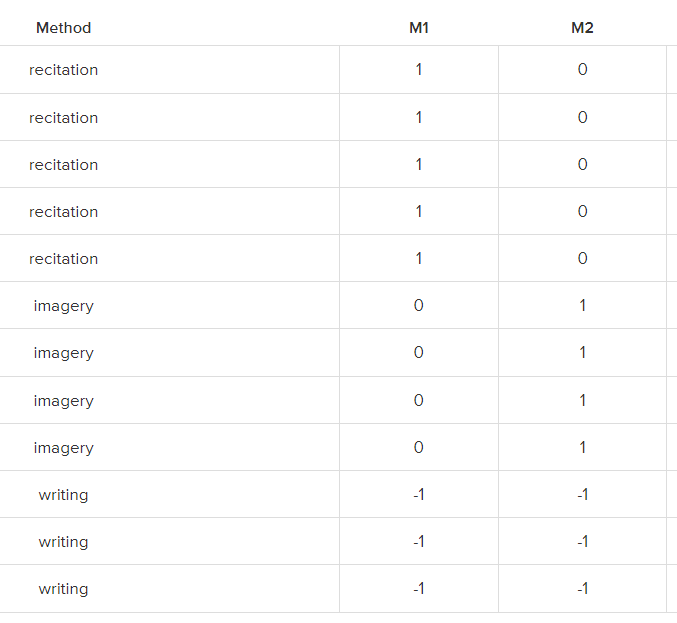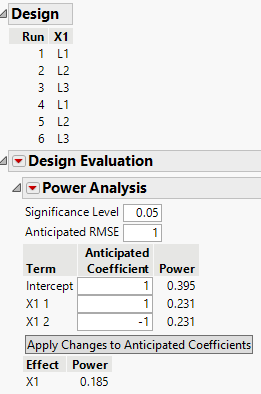- JMP will suspend normal business operations for our Winter Holiday beginning on Wednesday, Dec. 24, 2025, at 5:00 p.m. ET (2:00 p.m. ET for JMP Accounts Receivable).
Regular business hours will resume at 9:00 a.m. EST on Friday, Jan. 2, 2026. - We’re retiring the File Exchange at the end of this year. The JMP Marketplace is now your destination for add-ins and extensions.
- Subscribe to RSS Feed
- Mark Topic as New
- Mark Topic as Read
- Float this Topic for Current User
- Bookmark
- Subscribe
- Mute
- Printer Friendly Page
Discussions
Solve problems, and share tips and tricks with other JMP users.- JMP User Community
- :
- Discussions
- :
- Re: Why Does Categorical Variable Anticipated Coefficient Change Sign?
- Mark as New
- Bookmark
- Subscribe
- Mute
- Subscribe to RSS Feed
- Get Direct Link
- Report Inappropriate Content
Why Does Categorical Variable Anticipated Coefficient Change Sign?
I am looking for a more detailed explanation of why the Anticipated Coefficient changes sign between subsets of a multi-level categorical factor in the DOE platform.
From JMP help: Evaluate Design Options (jmp.com)
I understand why factor subsets need to be created for a categorical variable with 3 or more levels, and would expect a table like the following to be going on in the background of the DOE platform. This table is from here: FAQ: How do I interpret the coefficients of an effect-coded variable involved in an interaction in a...
However when I make a design with a 3-level Cat variable, the following snip is the Power table I get. Why is the "X1 2" anticipated coeff set to -1, when I would expect "L3" of X1 to implicitly be given that designation for both "X1 1" and "X1 2" as it is the 'opposing' factor level in both of those subsets? Maybe I am misunderstanding the construction of "X1 1" and "X1 2"?
Accepted Solutions
- Mark as New
- Bookmark
- Subscribe
- Mute
- Subscribe to RSS Feed
- Get Direct Link
- Report Inappropriate Content
Re: Why Does Categorical Variable Anticipated Coefficient Change Sign?
Hello @V1N0V3R1T4S,
The Anticipated Coefficients are generated by providing Delta (default=2), which is the desired difference you want to detect in the response due to changing from the low to high level (continuous factors) or between categories (categorical factor). JMP sets the coefficients for categorical factors as alternating +/- Delta/2 because this ensures, as we change between categories of the categorical factor, the difference in the mean response is Delta.
This is worked out in the attached PDF in case you want a more detailed answer. Here, we also showed that -- if you were to use all positive ones as you might be suggesting -- the difference in the mean response would be greater than Delta. See Power Considerations in Designed Experiments for further background.
Cheers,
@PatrickGiuliano (JMP Technical Support)
- Mark as New
- Bookmark
- Subscribe
- Mute
- Subscribe to RSS Feed
- Get Direct Link
- Report Inappropriate Content
Re: Why Does Categorical Variable Anticipated Coefficient Change Sign?
Hello @V1N0V3R1T4S,
The Anticipated Coefficients are generated by providing Delta (default=2), which is the desired difference you want to detect in the response due to changing from the low to high level (continuous factors) or between categories (categorical factor). JMP sets the coefficients for categorical factors as alternating +/- Delta/2 because this ensures, as we change between categories of the categorical factor, the difference in the mean response is Delta.
This is worked out in the attached PDF in case you want a more detailed answer. Here, we also showed that -- if you were to use all positive ones as you might be suggesting -- the difference in the mean response would be greater than Delta. See Power Considerations in Designed Experiments for further background.
Cheers,
@PatrickGiuliano (JMP Technical Support)
Recommended Articles
- © 2026 JMP Statistical Discovery LLC. All Rights Reserved.
- Terms of Use
- Privacy Statement
- Contact Us



